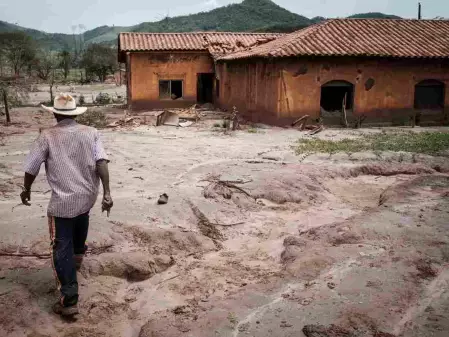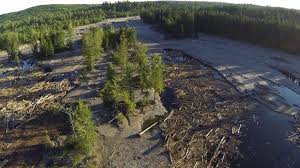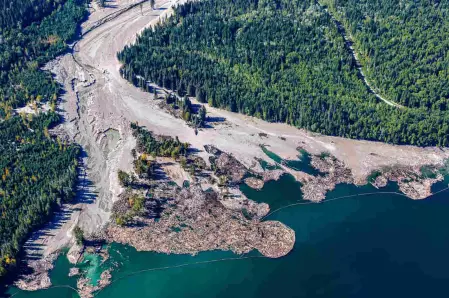U.N. Body Alarmed Over Mining Waste Disaster. Some of the worst mining disasters do not happen in mines. They take place at dams.
Ater inerals are extracted from mines, there are waste materials — including sand, rock and chemicals. They're known as "tailings" and are permanently stored in dams constructed of earth, rock-fill or concrete.

But the dams can fail — from chemical erosion caused by the tailings and from disasters like floods and earthquakes. And the toll can be devastating.
That is the message in a report by the United Nations Environmental Programme (UNEP) released in November. It is the first time the U.N. has documented the widespread destruction caused by these dam failures.
In 2014, for example, a Canadian dam built on a weak foundation broke, spilling billions of gallons of mine waste into a nearby creek. The torrent of waste and water washed away trees and contaminated nearby lakes. Lingering environmental effects from the Mount Polley Disaster, as it is known, are still felt to this day.
.jpg)
In 2015, a similar event occurred in Brazil. Another mine tailings dam failed, spilling — again — billions of gallons of waste. The spill turned into a rushing mud flow that inundated parts of a village, pulling cars downstream and destroying hundreds of homes. Nineteen people died as a result. An investigation found the dam's collapse was caused by flaws in its design and drainage.
These spills were not isolated incidents, according to the 70-page report, which documents mining waste failures from all over the world. It also offers recommendations for government and mining industry leaders to help prevent such disasters in the future. But it is unclear if its recommendations will lead to change.
The failures in the report include: a 1985 spill in Italy that caused the death of 268 people, a 1996 spill in the Philippines that "destroyed" the Boac River, a spill in Romania from 2000 named the "worst environmental disaster in Europe since Chernobyl" as well as the Canadian and Brazilian incidents.
"The ultimate goal is to reduce the catastrophic failures of mine tailings dams," says Oli Brown, coordinator of extractives work for UNEP.
.jpg)
The report refers to a 2001 study that found the technical knowledge to build and maintain secure tailings storage facilities exists. But the report says "an inadequate commitment to safe storage combined with poor management was the cause of most failures."
With the Mount Polley disaster, for example, the report notes the British Columbia Ministry of Energy, Mines & Petroleum Resources — the regulatory body overseeing mining in that province — did not ensure the dam was built or operated according to approved designs.
The UNEP makes two main recommendations. First: Governments and industry should make environmental and human safety a priority. The report claims that is not always the case. Among the proposals; expand regulations and levy financial and criminal sanctions for noncompliance.
The second recommendation is to establish an international forum with industry leaders and government representatives with the aim of strengthening mine waste regulation.
But the recommendations made in the report are just that: recommendations. It is up to host governments and the mining industry to decide if they want to implement them.

And as the report points out, governments have, in the past, responded in significantly different ways. After Brazil's disaster, which killed 19 people, authorities charged 22 people, among them executives of the mine's parent companies, with homicide. Talks are still ongoing for a settlement claim for monetary compensation between the parent companies and Brazilian authorities.
In Canada, although there were no deaths, the impact was still severe.
http://allnews.uodoo.com/
"There's significant impact on the indigenous peoples that are depending on that land and those waters," says Ugo Lapointe, Canadian program coordinator for MiningWatch Canada, a watchdog organization that supports the report's recommendations.